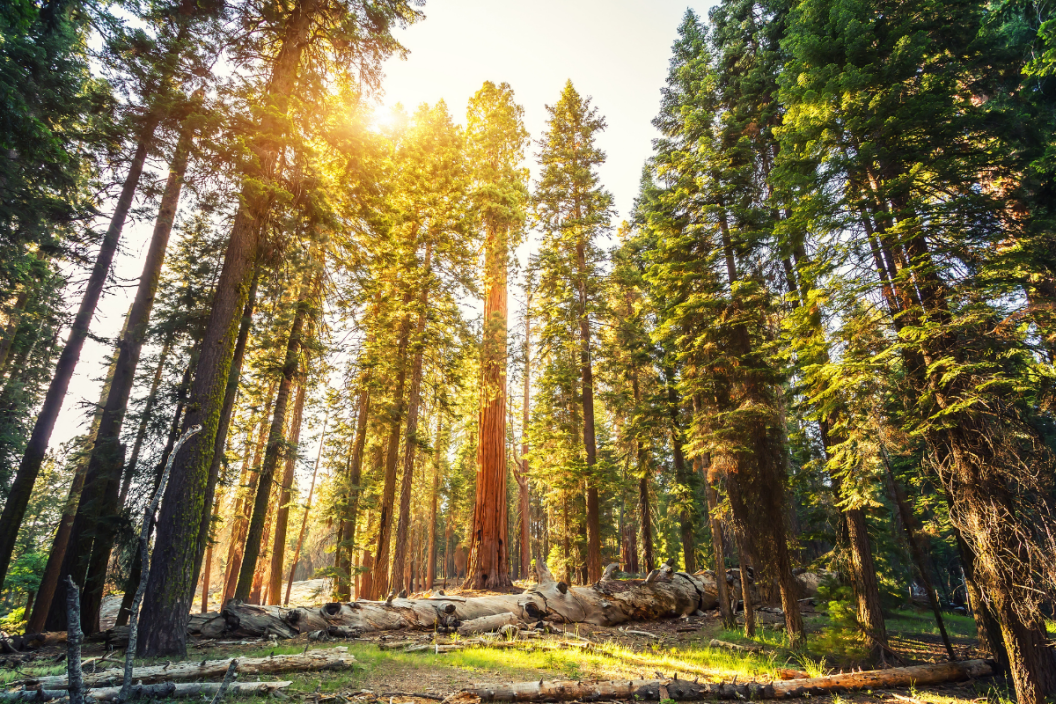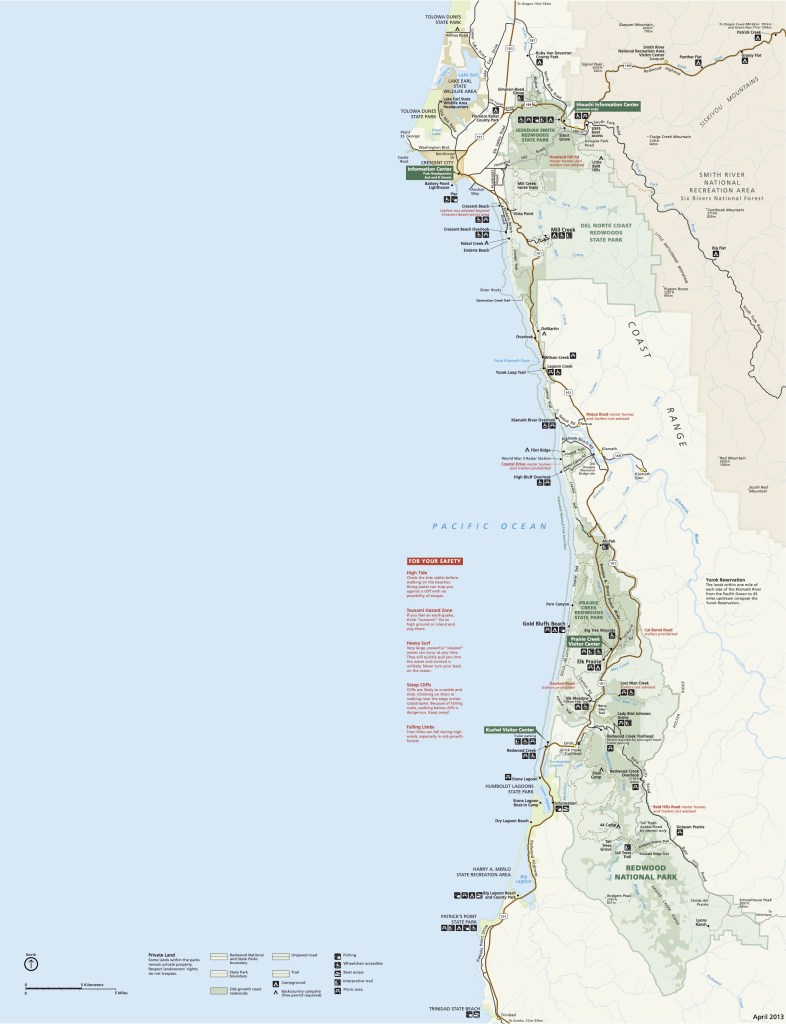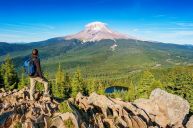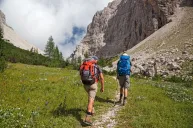When you hear "Redwood," chances are you start humming This Land is Your Land to yourself (I can't be the only one!) However, Redwood National and State Park is so much more than a line in a familiar all-American tune.
Located in Humboldt County, California, and becoming a World Heritage Site in 1980, Redwood National and State Parks sprawls over nearly 40 miles of the northern California coast and is comprised of nearly 139,000 acres. Home to some of the tallest trees in the world, Redwood National and State parks not only offer stunning views of giant sequoias within the redwood forest, but also offer hiking, kayaking, camping, horseback riding, biking, and a whole slew of activities the entire family can enjoy.
The national park has three California state parks within it: Jedediah Smith Redwoods State Park, Del Norte Coast Redwoods State Park, and Prairie Creek Redwoods State Park.
History of Redwood National and State Park
https://www.instagram.com/p/CNBTV64p1fT/
According to the National Park Services website, "The native people of the North Coast region have made the redwood forests and associated ecosystems their home for thousands of years." They continue to make it their home today, the Yurok Reservation lies just outside the park perimeter, the Yoruk tribe is one of only a few tribes that were never removed from their native land.
Thousands of people came to the Redwoods during the California gold rush beginning in 1850, in hopes of striking it rich. Though many did not find gold, they did find a lucrative business in logging. As time passed, there became a growing concern for the preservation of the old-growth redwoods, and in 1918, Save the Redwoods League was formed, in hopes to save the trees from further logging.
In 1923, Prairie Creek Redwood State Park was created, followed by Del Norte Coast Redwoods State Park in 1925, Jedidiah Smith Redwoods State Park in 1939, and finally, the National Park was created in 1968.
When Should I Visit?
Summers are typically the busiest time to visit, and winters can be rainy, so the best time of year to plan your visit is Spring or Fall.
Redwood National Park Map
A good place to start is one of the five information centers located throughout the park. In Crescent City, close to Oregon in the northernmost section of the park, you'll find an information center located beneath the park's headquarters. The Jedidiah Smith and Hiouchi visitor centers are also in the northern part of the park, and in the south, you will find the Prairie Creek and Kuchel Visitor Centers. All centers provide maps, Junior Ranger booklets, restrooms, and picnic areas.
The National Park Service website has some fantastic trail maps and suggested itineraries you can take, depending on how long you plan to spend at the park. From hiking, scenic drives, horseback riding, stunning views of the pacific ocean, and of course, camping, you'll easily be able to fill your days at the park.
Camping Among The Redwoods
https://www.instagram.com/p/CLVILAzA5-T/
Have you ever wanted to sleep among the redwood trees? At Redwood National and State Parks, you'll have plenty of opportunities to do so.
There are four developed camping sites within the park. From North to South they are: Jedediah Smith campground, Mill Creek, Elk Prairie and Gold Bluffs Beach. RV's are allowed at all four developed sites, but be aware none offer hook-ups. The largest is the Mill Creek Campground, which offers the most spots with 145. With just 26 sites, Elk Prairie is the smallest campground. Elk Prairie offers eight cabins for those who do not wish to use a tent. We suggest making camping reservations through Reserve California.
If you are looking for a more rustic camping experience, there are seven Backcountry Campsites throughout the park. North of the Klamath River are Little Bald Hills Camp and DeMartin Camp. It's a 3.3 mile "strenuous" hike to Little Bald Hills, and about a 3.5 moderate hike to DeMartin. South of the Klamath River are: Flint Ridge, Gold Bluffs Beach Campground Hike and Bike site, Elam Camp, 44 Camp, and Redwood Creek Gravel Bar, which is the park's only dispersed camping site. 44 Camp is the hardest to get to, with a 12 mile moderate-strenuous hike to the site. Elam, 44, and Little Bald Hills Camps allow horses. All sites except for the Creek Gravel Bar provide toilets, firepits, and bear-proof lockers for food storage.
Things to Do at Redwood National Park
https://www.instagram.com/p/CNY0zCkAfyo/
Horseback Riding
There are four trails that allow pack animals (horses, ponies, mules, burros, goats, and llamas): Little Bald Hills, Mill Creek Horse Trail/Rellim Ridge Trail, Orick Horse Trails, and Park Beaches (Crescent, Gold Bluff, Hidden, and Freshwater beach). Food for pack animals must be in the form of pellets or certified weed-free feed, they are not to graze on park vegetation. When unattended, pack animals must be corralled, tied, picketed, or hobbled.
Kayaking
Ranger-led kayak tours on the Smith River are available for a limited during the summer months. Departing from the Hiouchi Visitor's Center, tours leave at 12 pm Monday-Wednesday. Tours are about 3 hours, and you may bring your own lunch/snack. Participants must be over 10 years old, and anyone aged 10-17 must be accompanied by an adult. You must sign up in person at the Hiouchi Visitor's center, no more than one week before the tour. Don't forget to dress accordingly, you will get wet!
Biking
There are seven bike routes in the park, and October through May, cyclists are also invited to use the Newton B Drury Scenic Parkway to bike on the first Saturday of each month. The seven bike trails from north to south are: Little Bald Hills (4.8 miles, plus another 5 if you travel outside of the park), Ossagon Trail Loop (19 mile loop), Coastal Trail, Gold Bluffs Beach section (3 miles), Streelow Creek Trail (1.8 miles), Davison Trail (3 miles), Lost Man Creek (11 miles). Ossagon, Streelow, Davison, and Lost Man Creek all allow e-bikes.
Hiking/Walking
You will never look too hard for hiking trails at Redwood National Park. There are twenty-two northern trails, ranging from less than a half-mile long, to nearly 8 miles long. In the south, you will find 33 trails, ranging from just under a quarter of a mile, to a whopping 32 miles (the 44 Loop). The trails provide a wide variety of scenery as well as history; travel along an old gold-mining trail or logging road. Please note: pets are not allowed on any park trails.
Some of the more popular trails among hikers include the Lady Bird Johnson Grove, an easy 1-mile loop, located close to the Kuchel Visitor Center. The Fern Canyon Loop Trail is a quick, .7 mile loop, and offers amazing 30-foot cliffs that can be traced back 325 million years.
There are a total of six accessible Redwood hikes: Simpson-Reed Grove and Leiffer Loop in the North, and Big-Tree Wayside, Elk Prairie Trail, Foothills-Prairie Creek Loop, and Revelation Trail in the south. Revelation trail was developed specifically for the visually impaired, allowing for touching of different textures, and a variety of scents from nature.
Nature at Redwood National Park
https://www.instagram.com/p/CMIxG3TpjLS/
While the great Sequoias will have your jaw-dropping, there is other amazing wildlife throughout the park. From lupine, azaleas, rhododendron, trillium, and Columbia lilies, you will find a wide array of flowers. Be sure to check what is in bloom before setting out on your hike, so you'll know what to be on the lookout for!
You also will need to be on the lookout for wildlife throughout the park. Whale watch to see how many gray whales you can spot in the ocean, observe the Roosevelt Elk, explore the tidepool at Enderts Beach.
What Is The Tallest Redwood?
With at least 100 known coast redwoods measuring over 350 tall, some of the tallest on record include the Stratosphere Giant and Hyperion, which comes in at just over 380 feet tall. For reference, that's taller than the Empire State Building... by about 75 feet!
Things to Do for Kids
Kids can pick up a Junior Ranger Book at any information center, which are sure to provide endless entertainment during their time at the park. They will keep themselves busy completing the activities in the book. For teens, there is a Documentary Explorers Camp.
For more information visit www.nps.gov/redw/index.htm
Have you walked with these giants? Share your adventure at our Wide Open Roads Facebook!





